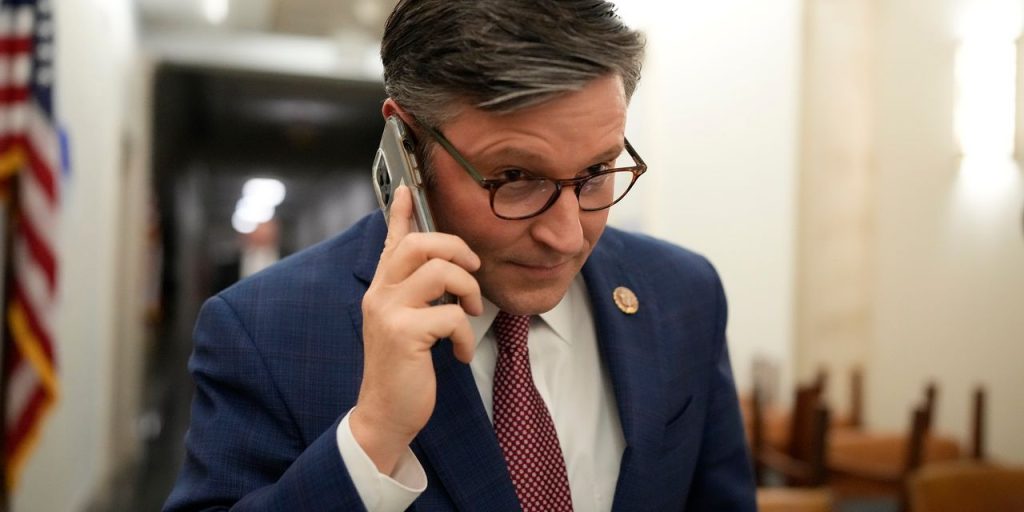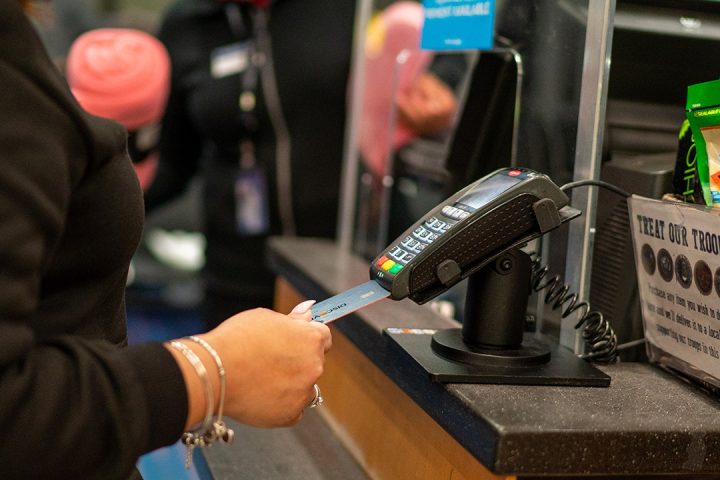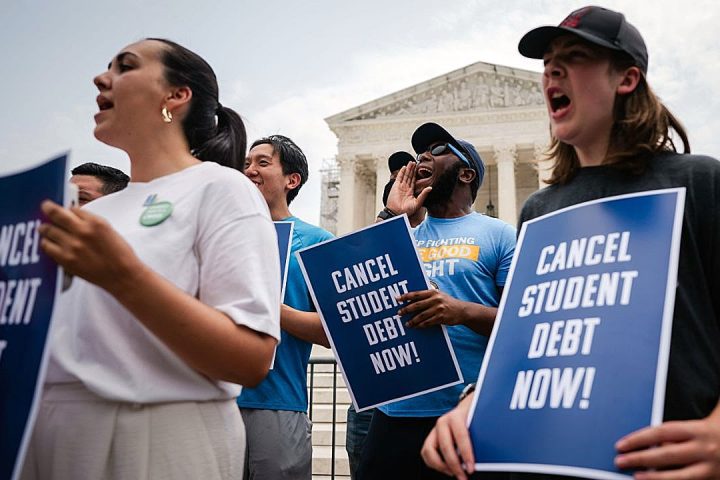Student-loan borrowers calling their servicers are being placed on hold for 16 hours straight, they’re getting quotes for monthly payment amounts that can differ by nearly $3,000 depending on where they check, and are being stymied in their efforts to access debt forgiveness they’re entitled to under the law.
Those are some of the findings of a report released recently by the Consumer Financial Protection Bureau’s education loan ombudsman. The report, which the ombudsman is required to submit to Congress each year, analyzed 9,284 complaints made to the bureau about student-loan products between September 2022 and August 31, 2023.
The report focused in part on the challenges borrowers have faced in the lead up to payments and interest resuming this fall on federal student loans after a more than three-year pause. The complaint data echoes stories from borrowers, who over the past several weeks have talked about the difficulty they’ve encountered obtaining accurate information about their loans, contacting customer service representatives and accessing promised relief.
The CFPB handled nearly 6,400 federal student loan complaints in the year leading up to August 31, 2023 — higher than in recent years, the report said. Still, the ombudsman, Robert G. Cameron, wrote that the complaints point to issues in the student-loan program that have existed for years.
“Many of the challenges highlighted in this report are not new,” Cameron wrote. “Complaints submitted to the CFPB suggest that fundamental problems that have been documented in the student loan program persist.”
Borrower advocates had warned against resuming federal student loan payments before fixing the underlying issues in the student-loan system that can make it difficult for borrowers to manage their debt successfully. For years, advocates have complained that servicers don’t provide borrowers with enough or the right information to access the benefits of the federal student loan program.
Borrowers heeded the call of the government and servicers to prepare for student loan payments to resume, said Alpha Taylor, a staff attorney at the National Consumer Law Center. Instead, they were met with challenges logging into their servicer’s website or getting someone on the phone, as the report documents. Still, the government highlighting these problems isn’t enough, Taylor said.
“Unfortunately student-loan borrowers, they are the victims of a broken system,” Taylor said. “At this critical time, the rate of error is just too high.”
Scott Buchanan, the executive director of the Student Loan Servicing Alliance, a servicer trade group, said the report provides more of a look back at issues servicers and the government had been anticipating for months. In some cases, those challenges have been largely resolved, he said. He expressed frustration with the lack of information in the report about how many borrowers came forward with each type of complaint.
“It’s sort of anecdote after anecdote,” he said. “It’s hard to react to something that’s really one-off borrower stories after one-off borrower stories without any scaling.”
The major issues the CFPB said borrowers are facing as they return to repayment
Borrowers reported to the CFPB that they had trouble getting in touch with customer-service representatives at their student-loan servicers. Sometimes borrowers faced wait times that were so long that it pushed them to “simply give up,” the ombudsman wrote in his report.
One borrower reported to the CFPB that between June and September of this year they tried to contact their servicer through multiple channels to enroll in a new payment plan, but struggled to get through.
“After holding the phone for more than an hour, it cuts off,” the borrower wrote. “This happened numerous times.” The borrower goes on to say that they tried to log into their account and received an error message saying that it didn’t recognize their email. “Therefore, I cannot access nor reset my password to enter my account.”
Another borrower reported being quoted a wait time of roughly 16 hours to speak with someone about their student loans.
“I cannot get a hold of my loan servicer,” the borrower wrote. “I have tried a half dozen times. Either the phone line is disconnected, the chat service doesn’t work, or the wait is 960 minutes. I cannot adjust my payments or do anything unless they talk with me.”
In one case, a borrower said they were told by their servicer that the organization didn’t participate in a new repayment plan launched by the Biden administration earlier this year, even though all servicers working in the federal student loan program are required to provide borrowers with access to this and other plans.
Quoting incorrect payment amount information
Borrowers reported receiving differing information about the amount they’d be required to repay depending on what source they check. In the lead up to the return to student-loan payments, the Biden administration announced a new repayment plan called SAVE. The new plan provides a variety of benefits to borrowers, including protecting a larger portion of their income than ever before from student loan payments and not allowing a borrower’s balance to grow if their monthly payment doesn’t cover the interest.
But the terms of the plan are new to both borrowers and servicers, and there have been glitches in implementing it. The Department of Education estimates that about 305,000 borrowers received incorrect payment information and the issue occurred across all servicers.
Complaints received by the CFPB echo those reported by borrowers to MarketWatch and elsewhere about the challenges they’ve experienced receiving correct information about their monthly payments.
One borrower told the consumer watchdog that before their loan was transferred to a different servicer, their monthly payment was listed as $199.22. But on the main page of their account with their new servicer, their monthly payment was listed as $3,210.99, even though they hadn’t provided their servicer with any new information that would change their monthly payment.
The borrower said they called and messaged their servicer multiple times, but was told the $3,210 number was their monthly payment and if they wanted it to change they had to submit new information documenting their income. That’s even though the borrower isn’t required to submit new income information under the terms of their plan for another six months. In addition, when they click online further into their account information, the borrower said they see the “appropriate” monthly payment amount: $199.22, creating more confusion.
Another borrower told the CFPB they submitted updated income information in December of last year and they’re enrolled in the SAVE plan. That meant that their monthly payment amount should be based on their 2021 annual income of $5,170, entitling them to a monthly payment of $0. Instead, the borrower’s loan servicer quoted them a payment of $2,521.80, they wrote. They called customer service to get more information about the basis for the payment amount.
“The representative could not justify the monthly payment calculation nor did the representative recalculate my monthly payment correctly,” the borrower wrote. “I was directed to re-enroll in SAVE, however, I am already enrolled in this plan.”
Buchanan, of the servicer trade organization, said “most of the big issues that surrounded SAVE recalculations have been resolved.”
“We’re interested if there are borrowers who are still having those issues, let us know,” he added.
Problems getting access to cancellation
Servicers are throwing up obstacles in the way of borrowers accessing debt relief they’re entitled to, according to the CFPB report. Borrowers and advocates have reported facing this challenge for years, but with some borrowers receiving student-loan bills for debt that should have been canceled the issue has become more urgent in the past several weeks.
A borrower who said they’ve worked as a public school teacher for 26 years reported trouble accessing the Public Service Loan Forgiveness program. That initiative allows borrowers who work for the government and certain nonprofits to have their federal student debt canceled after 10 years of payments and work in a qualifying field.
The Biden administration announced steps in 2021 aimed at making it easier for borrowers to access debt relief under PSLF. For years, borrowers who met the spirit of the law struggled to actually have their loans cancelled due to technicalities. Despite these changes this borrower reported delays in having their payments counted towards debt relief.
“I waited from October 2022 to March 2023, for my forms to be processed. I was told I needed to wait 30, then 60, then 90 days … I have now been advised that I am waiting for prior payment counts from my prior [my servicer] to be updated in the National Student Loan Data system. I have been informed that this is done manually and may take until 2024,” the borrower wrote. “The false promises of 30, 60 or 90 day processing for the PSLF is not relevant if my prior payment counts cannot be calculated until 2024.”
“I made on-time payments monthly since 2007, and have far exceeded the 10 year PSLF requirement,” they added.
Another borrower who was trying to get their payment count updated based on periods of service with the U.S. Army told the CFPB they were struggling to get their servicer to adjust their payments in a timely manner. The borrower said that their loans were transferred to their current servicer in August of 2022. After several months, the borrower called their new servicer to see if they had received their PSLF documentation, which their prior servicer had already approved.
The borrower was told to resubmit their documents. By the time they filed their complaint with the CFPB, it had been 8 months since they sent in their forms.
“It should not take this long to process PSLF and I don’t appreciate not being informed that my documents have been canceled,” the borrower wrote. “I am being told that it can take a long time, and while I understand that and am being patient, it is almost time for me to recertify and resubmit documents for the next year.”
Report notes obstacles private student loan borrowers face accessing forgiveness
In addition to outlining complaints about federal student loans, the CFPB also highlighted challenges borrowers are facing with private-student debt. For example, the ombudsman noted that servicers working with private student loan borrowers are also throwing up obstacles to them accessing relief under the law.
Over the past several months, the consumer watchdog has grown increasingly concerned about student-loan servicers attempting to collect on debt borrowers took on as students that was discharged in bankruptcy. Typically student loans have to clear a high bar in order to be discharged in bankruptcy. To be eligible for this special treatment these debts have to be taken on to attend an accredited institution and be equal to up to the cost of attendance.
Over the past several years attorneys have been arguing that some debt borrowers took on as students doesn’t meet this criteria and is more akin to a regular consumer loan for the purposes of bankruptcy. This includes debt beyond the cost of attendance or loans for unaccredited programs like a bar study course. Three appellate courts have sided with these attorneys saying they debt should be discharged when a borrower files for bankruptcy. The CFPB has also taken this position.
Still, borrowers are complaining about this issue, the report notes.
One borrower wrote to the CFPB saying their private education loan was discharged in February 2022 through their bankruptcy. The loan disappeared from the borrower’s credit report, but then was put back into repayment in April of last year.
“They are still trying to collect on this loan, even though it was discharged,” the borrower wrote. “I have tried to talk to [my servicer] but they keep telling me that it’s not eligible for discharge with no explanation as to why not.”
Buchanan, of the servicer trade alliance, described the report’s findings on the topic as “self-affirming,” given that the bureau publicly took a position on the issue of education debt discharged in bankruptcy earlier this year.
“It’s really interesting that the report’s findings mirror the political objectives of the bureau, that they’ve stated months ago, that all the sudden say that they have data that supports that,” he said.
That borrowers with both private and federal student loans are facing challenges accessing debt relief they’re entitled to signals to Mike Pierce, the executive director of the Student Borrower Protection Center, an advocacy group, that the challenges servicers are facing in the federal system aren’t just about a lack of resources from the government. Instead, it’s an issue that goes to the heart of the way the sector approaches its business, he said.
“What you see here is an industry that has never invested in servicing its customers well or complying with the law,” Pierce said.
Less funding for servicers
As servicers and the system face the unprecedented challenge of returning roughly 28 million borrowers to repayment, they’re also dealing with resource constraints. Congress declined to provide the Department of Education with its full funding request for the Office of Federal Student Aid, which oversees servicers. Following the cuts, servicers slashed call center hours.
In addition, roughly 40% of borrowers have a different servicer than they did before the pandemic-era payment pause. Transferring loans between servicers can sometimes result in more challenges for borrowers.
The CFPB report is “consistent with what borrowers have been telling anyone who will listen to them,” Pierce said. “The student-loan system is not up to the task,” of returning millions of borrowers to repayment “without significant errors that cost people a lot of money.”
“It’s great to see the CFPB take that view and put the blame where it belongs — with the student-loan industry,” he added.
Read the full article here






